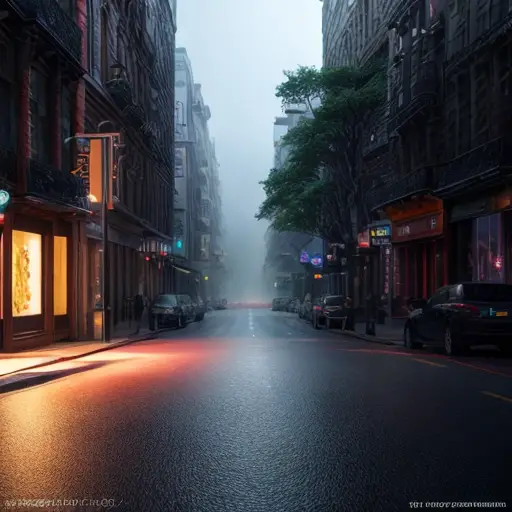Picture this: a world devoid of color, where everything is as dull as a Monday morning. Thankfully, in the midst of this monochromatic madness, a group of brave souls embarked on The Quest for Color: Unveiling the Pioneers of Color Photography. These intrepid individuals were determined to bring a splash of vibrancy to the world, armed with their cameras and a burning desire to capture life in all its chromatic glory. But what was the first practical form of color photography, you ask? Well, hold on to your black and white hats, because it was none other than the humble autochrome plate! This ingenious invention allowed photographers to capture the world in all its technicolor splendor, much to the delight of art enthusiasts and fashionistas alike. So, let us raise our cameras high and salute these pioneers of color photography, for they truly painted the world with hues that were anything but bland.
The first practical form of color photography was called the Autochrome Lumière, invented by the Lumière brothers in 1903. This innovative process involved coating a glass plate with microscopic potato starch grains dyed in red, green, and blue-violet colors. When the plate was exposed to light, the grains acted as tiny color filters, allowing only specific colors to pass through. The plate was then developed, and the resulting image appeared in full color when viewed through the grains. This breakthrough in color photography revolutionized the field and paved the way for the vibrant and diverse world of color images we enjoy today.
Imagine a world where everything is as vibrant as a unicorn's mane, where colors dance and sing with every click of a camera. Enter the Lumière Brothers, the dynamic duo who brought us The Birth of Autochrome: their revolutionary breakthrough in the realm of color photography. These visionary siblings, armed with their scientific prowess and a dash of artistic flair, unveiled the first practical form of color photography to the world. With their ingenious autochrome plates, they captured moments in time with a palette that would make even the most seasoned artist green with envy. From the rosy cheeks of a blushing bride to the golden hues of a sun-kissed landscape, the Lumière Brothers gifted us a technicolor wonderland that continues to inspire and awe. So, let us raise our cameras high and pay homage to these pioneers of color, for they painted the world with a brush dipped in pure magic.

Beyond the groundbreaking invention of the autochrome plate, the world of color photography continued to evolve and dazzle with a series of technological advancements. While the Lumière Brothers' creation was a game-changer, it was only the beginning of a colorful revolution. Enter the Kodachrome film, a true pioneer in the realm of color photography. Developed by the Eastman Kodak Company in the 1930s, this innovative film introduced a new level of vibrancy and accuracy to color images. Suddenly, photographers had a tool that allowed them to capture the world in all its chromatic glory, from the vivid red of a ripe apple to the deep blue of a cloudless sky.
But the quest for color didn't stop there. In the 1960s, the world witnessed the birth of the instant color film, thanks to the genius minds at Polaroid. This technological marvel allowed photographers to capture a moment and see it come to life in vibrant hues right before their eyes. No more waiting for days to see the results; instant color photography brought a new level of excitement and immediacy to the art form.
As time marched on, digital photography emerged as the next frontier in color capture. With the advent of digital cameras, photographers were no longer limited by the constraints of film. They could now experiment with color, manipulate it, and push the boundaries of creativity like never before. The digital era brought forth a new wave of color photography, where the possibilities seemed endless and the results were limited only by the photographer's imagination.
From the humble beginnings of the autochrome plate to the technological marvels of Kodachrome film, instant color photography, and the digital revolution, the pioneers of color photography have left an indelible mark on the world of art and visual storytelling. Their relentless pursuit of capturing life's vibrant moments has enriched our lives and allowed us to see the world through a kaleidoscope of colors. So, let us celebrate these innovators and embrace the ever-evolving world of color photography, where every click of the shutter brings us closer to capturing the true essence of our colorful existence.
The first practical form of color photography was called Autochrome, invented by the Lumière brothers in 1907. It involved coating a glass plate with microscopic potato starch grains dyed in red, green, and blue-violet colors. When light passed through these grains, it created a color filter effect, allowing the plate to capture a full-color image. So, in a way, the first practical form of color photography was essentially a potato-powered invention!
The impact and legacy of the first practical form of color photography, the autochrome plate, cannot be overstated. This revolutionary invention unleashed the power of color, transforming the way we perceive and experience photography. It opened up a whole new world of artistic expression, allowing photographers to capture the vibrant beauty of life in all its glory. The autochrome plate paved the way for future technological advancements, inspiring generations of photographers to push the boundaries of color and creativity. Its legacy lives on in the digital age, where color photography continues to captivate and enchant, reminding us that the world is not just black and white, but a kaleidoscope of hues waiting to be discovered and celebrated.